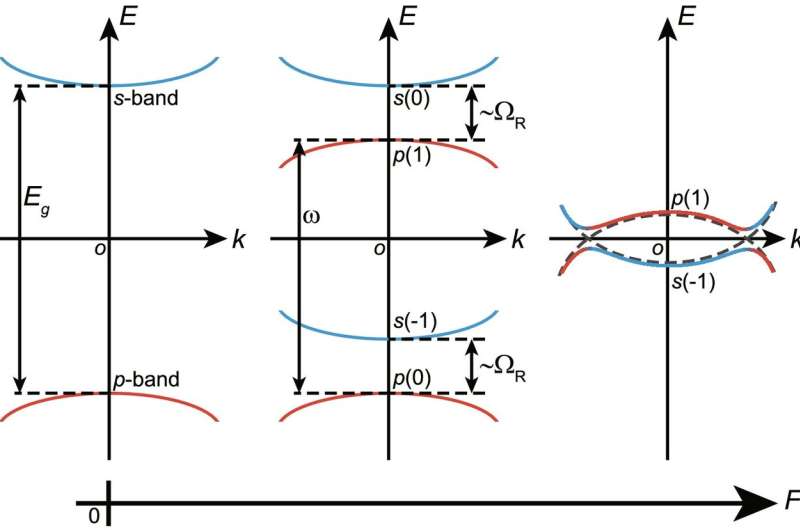Electrons living on the edge

Scientists at the University of Tsukuba demonstrated the possibility of electrons moving as if they were massless when certain materials called "topological insulators" are irradiated with laser beams. This work may lead to a new class of highly efficient electronic devices and photonic crystals.
Conventional electronic devices rely primarily on silicon crystals. From the point of view of electrons that make up the electrical signals coursing through these materials, the systems are so big as to be practically endless. This causes most of the electronic structures to resemble the mathematical solutions of a "bulk" infinite repeating lattice. However, recent advances in solid state physics have pointed to the possibility of "topological insulators," which are materials that are usually electrical insulators, but have states that exist at the edge of the material. These surface states created by the abrupt transition from the material to empty space have special properties, such as protection from being disrupted by disorder, as can happen with other electronic states. In certain cases, the electrons can move so freely they act as if they had no mass at all. As intriguing as topological states are, much is still not known about how to generate them and how they behave.
Now, a research team at the University of Tsukuba has used theoretical calculations to predict the electronic states that can be formed when a laser excites a topological insulator. This can help fill in gaps in our knowledge about these materials, because empirical data is difficult to obtain. The researchers were able to show that Dirac states, in which electrons start to appear massless, can be generated this way. "Experiments on non-equilibrium topological states remain scarce, even though they have the potential to provide a new platform to create unexpected massless Dirac states," senior author Ken-ichi Hino says. The team was able to explain their findings as resulting from the creation of fourfold accidental degeneracies at the high-symmetry points. "We hope our work will accelerate the process of investigating topological insulators," Professor Hino says. The results of this project may help pave the way for new computers systems that waste less energy on the basis of these materials.
More information: Boyuan Zhang et al. Edge states of Floquet–Dirac semimetal in a laser-driven semiconductor quantum-well, Scientific Reports (2021). DOI: 10.1038/s41598-021-82230-3
Journal information: Scientific Reports
Provided by University of Tsukuba




















